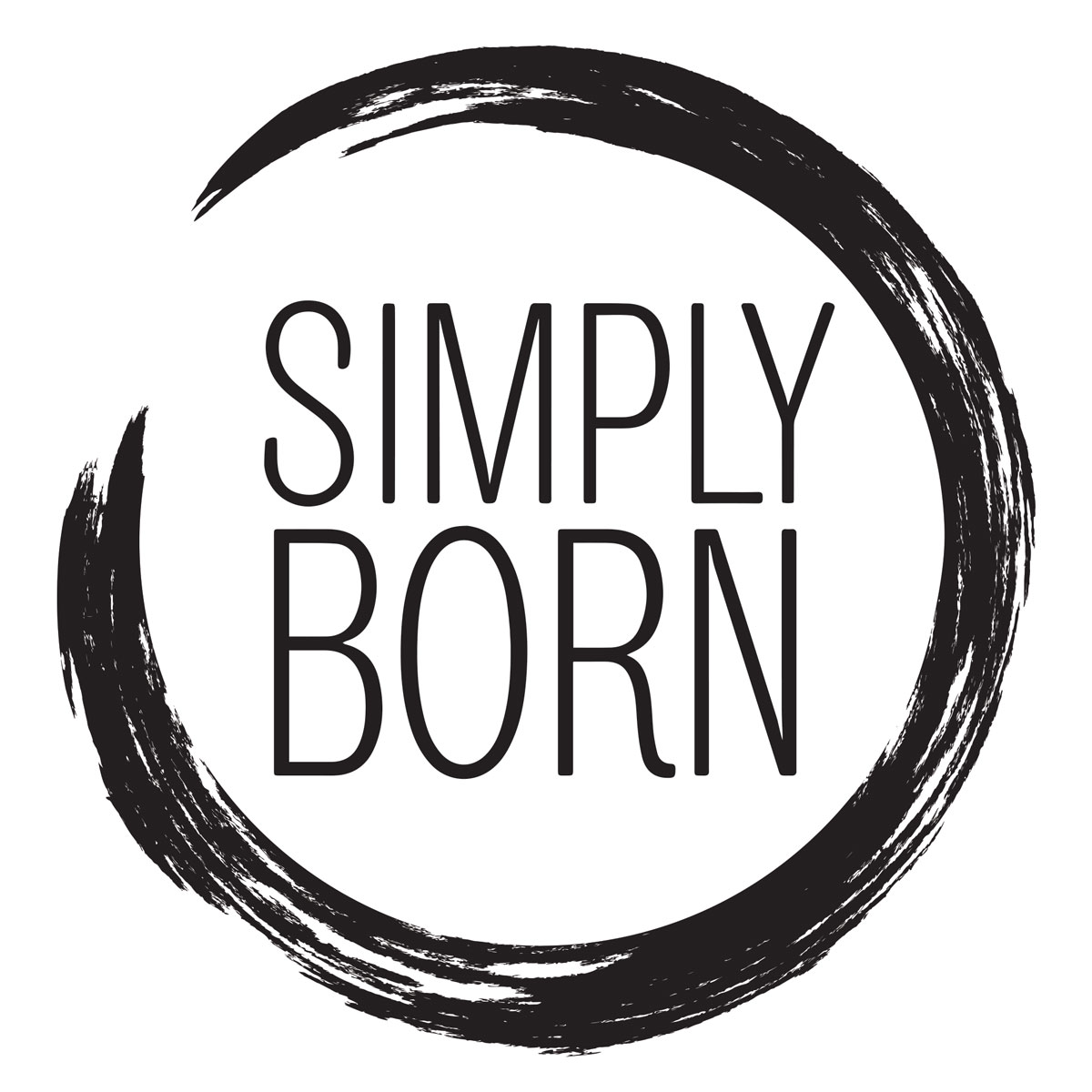Cracked nipples! Shallow latch versus deep latch! Areolas, milk sinuses, breast compressions. Swallow sounds, colostrum, hand-expression, leaking...breast pads, breast pumps, mastitis...my sister said she got mastitis, was it mastitis? Or was it a blocked duct? Is that a thing? Blocked ducts? Feeding schedules, on-demand feeds, let-downs and nipple shields. How's a gal supposed to sort out all these things while pregnant, let alone in the early weeks of transitioning to motherhood? What does a cracked nipple look like and how will you know you have one? What is a shallow latch? And how will you know if you have the elusive deep latch? What happens when your milk “comes in” and what does that mean anyway? How's a gal supposed to sort out all these things while pregnant, let alone in the early weeks of transitioning to motherhood?
I am here to help! My name is Raquel Knack, from www.grnaturalchildbirth.com, a breastfeeding counselor and childbirth educator, and your resource for all things breastfeeding and birth related.
Many new mothers imagine breastfeeding as a beautiful, blissful bonding time with baby...holding them close and nourishing them with their own bodies. And it definitely can be...but in the early days and weeks that follow birth, it’s sometimes NOT so blissful...in fact, it can be one of the most unglamorous, challenging times in a woman’s life.
The reality of postpartum
You have just pushed an entire human out of your vagina, a vagina that has stretched, opened, and possibly torn as baby made his way to your arms. In addition, your breasts are now starting to produce milk and they are bigger than they have ever been, stretched to capacity, tight, and painful. Add to this a lack of sleep and the wild ride your hormones are taking you on. It’s enough to take even the strongest woman down. Because it is a transition...from a symbiotic relationship with baby inside, to a symbiotic relationship with baby outside. Everyone is learning...adjusting...growing. One mama said to me “I had no idea that I could be this exhausted and uncomfortable and still be awake.”
And now your birth team is suggesting you put a feverishly sucking baby mouth on your breast? Seriously?
Breastfeeding, a “natural” way to feed a baby
Breastfeeding is promoted as a “natural” process. But as a lactation counselor and mother of 3 breastfed babies, I can tell you...it often does not come easily or instinctually. Everyone is talking about how great breastfeeding is for baby and mother, and I agree, but no one really talks about how hard it is. To me, breastfeeding is rewarding, but it takes work, dedication, and sometimes sacrifice. You are literally offering up your body multiple times a day, keeping it healthy and hydrated in order to make the milk your baby needs. If you return to work after baby is born, you commit to regular pumping sessions in order to keep the milk flowing and provide bottles so care providers can offer them to baby when needed. For most mothers and babies, it takes at least 4-6 weeks before breastfeeding begin to feel easier and more “natural”. By 8-12 weeks, you will simply bring baby close to your breast and wah-lah, they do it all on their own. It’s amazing.
One thing I can advise on straight away is that you can’t “try to breastfeed”. You have to “decide to breastfeed”. But there are people here to help you on your journey. So let’s get started…
What is all this amazing milk anyway? Or is it colostrum? What’s the difference?
You may have noticed that towards the end of your pregnancy that you may be leaking something from your breasts, or if you squeeze them gently or experience a great orgasm, something is leaking from your nipples. This is colostrum...the liquidy, sticky magic that helps baby establish amazing gut flora and makes his transition to this world easier. It is made in teaspoons, rather than ounces, and this is why it is important for baby to nurse often after birth. Around day 3-5 after baby’s birth, your milk will “come in”...meaning the colostrum will change to actual breastmilk. When this change occurs, your breasts will feel huge and full...often bursting with milk. It may feel like you can feed 100 babies! And your body wants to feed 100 babies but it will adjust slowly, over the next week, to feeding your one lovely baby. Breastmilk is made from a supply and demand system, what comes out in a 24 hours period, is what is made the next day. So how do you become a milk-making machine? Feed the baby. Often.
How often does baby needs to eat, and how will I know if they are hungry?
Baby needs to eat frequently after birth, about every 2-3 hours, and will need encouragement to do so. They have just had a hard journey out of the birth canal and are tired. Plus the experience of nursing for them is so comforting and calming, that it often lulls them right back to sleep after a few sucks and swallows! But they need many swallows! Rub their feet, touch their cheeks, and sometimes a cool cloth against their skin can help too. So what are the signs or cues that baby is ready to eat? You will notice that baby, even when hours old, will start to show unique signs of being ready for nourishment. Take a look at this cutie: https://www.youtube.com/watch?v=3sA559uk4vI
But how can you get your nipple and areola (there’s that word again!) in their mouth successfully?
Getting baby to the breast
Begin by placing baby tummy to tummy in a side lying position so their mouth lines up with your nipple. You and baby may need a little boost and many mothers find a regular bed pillow or a specific breastfeeding pillow such as My Brest Friend, can raise baby to the right level. Once baby is in this position, encourage him to open his mouth wide...like a big yawn...first. To do this, tickle his lips with your nipple which will stimulate him to open his mouth. You can even say “open wide” as you do this! Once you see a wide open mouth, act quickly and bring baby towards your breast, inserting your nipple into his mouth. Once he feels a sensation inside his mouth, he will begin to suck vigorously. For some babies, this process takes time. It is common for a baby to be a little fussy at the breast when trying to latch on, often taking 2-3 minutes to actually get a good latch. He is learning and so are you. Be patient. Here is a really great video showing a newborn getting to the breast with a real mom. https://www.youtube.com/watch?v=Jq5dWoOGJbM
How does it feel? Like, really?
Once baby is latched, you will experience what I call a toes-coming-out-of-the-top-of-your-head sort of feeling...for about 20 seconds, as baby begins to suck. Stinging sensations on your nipples, possible uterine contractions at the same time, and definitely a feeling that will require those deep abdominal breathes that got you through labor. After this 20 second mark, the sting should subside and you just feel a gentle tugging. If the stinging doesn’t stop, then it’s time to take baby off your breast and try again. It’s a bit tricky at first to break the super suction of a newborn. Gently insert a clean and neatly trimmed finger alongside baby’s gums and gently compress your breast tissue down and away from baby’s mouth. Then remove the nipple quickly, lest baby feels it on his lips and begins sucking again on the wrong parts!
Baby is on, sucking, now what do I do?
Baby is latched and sucking what now?
Once baby is latched well, and you are having little pain or discomfort, listen for swallow sounds. What are swallow sounds? Have a listen here: https://www.youtube.com/watch?v=hBhvlvTESaM And here: https://www.youtube.com/watch?v=RmquR6ETsPs
You will want to hear a consistent pattern of “suck-suck-swallow” with short pauses in between. For instance, “suck-suck-swallow, suck-suck-swallow, suck-suck-swallow, PAUSE”. Then it repeats again. There may also be periods where you hear “swallow-swallow-swallow”, as well as possible coughing sounds as the milk rushes in. If baby begins to cough, gently take him off the breast, catch the milk in a cloth diaper, and re-latch. If you are not hearing good swallow sounds, encourage baby to suck by including breast compressions. Take a peek at this video to learn how: https://www.youtube.com/watch?v=wBrLYhABUlM
Baby will need to feed at least 10-15 minutes with the active “suck-suck-swallow” sequence, or longer if he seems fussy. Most newborn feedings last anywhere from 15-45 minutes. Some babies are all business, getting their colostrum or milk quickly. While others like to have “an experience”, and nurse at a more leisurely pace. Feed on one side first, making sure to completely empty the breast (it will feel softer and less firm), then offer the other side if baby still seems hungry.
One key factor to keep in mind is that it takes energy and burns calories for a baby to nurse. In the early days, it is essential to ensure that baby nurses well at the majority of his feeding sessions. Each feed builds on the next, giving him the energy and calories needed to effectively nurse and remove the colostrum or milk at his later feedings.Watch for baby’s signs of fullness - relaxed hands and arms, relaxed body, and possibly unlatching from your breast himself and falling asleep.
Caring for the ta-tas
Until having a baby and breastfeeding, you likely never touched your breasts so much. Now you are highly familiar with how they look before and after a feeding, how they feel before and after a feeding, and which side produces more (very common) and which side is “dessert”. In order to keep them healthy and milk making machines, just pay extra attention. Does anything hurt? Are there hard spots? Hot spots? If you have to miss a feeding for some reason, make sure to pump. Apply some sort of nipple butter to the your nipples after each feeding. Even if they look great, even if there is no cracking or bleeding (yes, a series of 4-5 bad latches can take a healthy nipple to a very sore, torn up, bleeding nipple fast!)This will keep the tissues healthy and soothed between feedings. (If there is still some emollient on your nipple when baby is ready for his next feeding, just gently remove it with a tissue). I recommend this up to 8 weeks. Right about then the toes-through-the-top-of-your-head feeling goes away for good and your breasts have adjusted to their new lifestyle.
Extras to make breastfeeding easier:
Though I am not much for extras when it comes to breastfeeding, there are three items that I recommend new mothers have in their arsenal. These tools can be essential to help a mother when breastfeeding isn’t going easily.
A nipple shield
A Blue Moon manual breast pump/milk collector
A new electric breast pump
A nipple shield is a silicone sheath that goes over the nipple and areola to protect it and also give baby more to grab onto if a mother has inverted or flat nipples. If your nipples are already to the tender, cracked and bleeding stage, a nipple shield can allow for a gentle barrier between baby’s mouth and tongue and the tender breast tissue. It continues to allow milk transfer but helps to keep mother comfortable when breastfeeding.
The Blue Moon manual breast pump/milk collector can be used many ways, but my two favorite are:
A manual breast pump to aid in relieving pressure when your milk first comes in and soften the breast tissue to help baby get latched.
A milk collection device. It is a soft silicone flange that can be placed on the opposite breast baby is feeding on to collect the milk that is leaking from that breast. Many mothers can get up to an ounce of milk that would otherwise be dripping down a shirt or absorbed into a breast pad!
An electric breast pump is essential if you are returning to work, and also just to “take the edge off” when your milk comes in and your breasts are in that hot, hard, and painful stage I mentioned above. You can pump for 3- 5 minutes, get the breast tissue softened, and then latch baby on for the remainder of the feed. In addition, if your nipples are cracked and bleeding, taking a day or two off of actual breastfeeding and only pumping and offering the baby a bottle in a paced feeding format can be so helpful to actively heal the breast tissue. Once the tissue is back in healing mode, a mother can return to breastfeeding with the assistance of a lactation educator and get baby latched pain-free. Some mothers also choose to pump extra milk for times when they are away from baby, or when their partners take one of the night feedings. (Just make sure to actively empty the breasts at consistent intervals - every 2-3 hours in a 24 hour period - through breastfeeding or pumping in order to avoid blocked ducts or mastitis).
So if you are considering breastfeeding or are in the throws of it, one key bit of advice I like sharing with new mothers in pregnancy or the early weeks postpartum, is to have confidence in your body. In the same way your body knows how to grow your baby, and how to birth the baby out, it knows how to make milk for your baby too. Listen to your intuition. You are the expert on your baby. Nurse often, listen for swallow sounds, and pay attention to baby’s wet and poopy diapers. (See Sara for a great worksheet showing baby’s bowel movement colors and amounts!) Encourage baby to nurse actively, and work to relax while nursing in order to allow the milk to flow.
If you are listening to your intuition, working to nurse frequently, but find that nursing isn’t going well for you, it is important to get help right away. There are so many amazing resources in Grand Rapids! La Leche League meetings offer free lactation support based on mother-to mother guidance (like meeting with your sister or auntie who has amazing breastfeeding knowledge and tips) and many hospital lactation services can be covered by insurance. If not leaving your home sounds more appealing, please contact me for a home visit. For more information, please visit https://www.grnaturalbirth.com/nourish-lactation-services/







